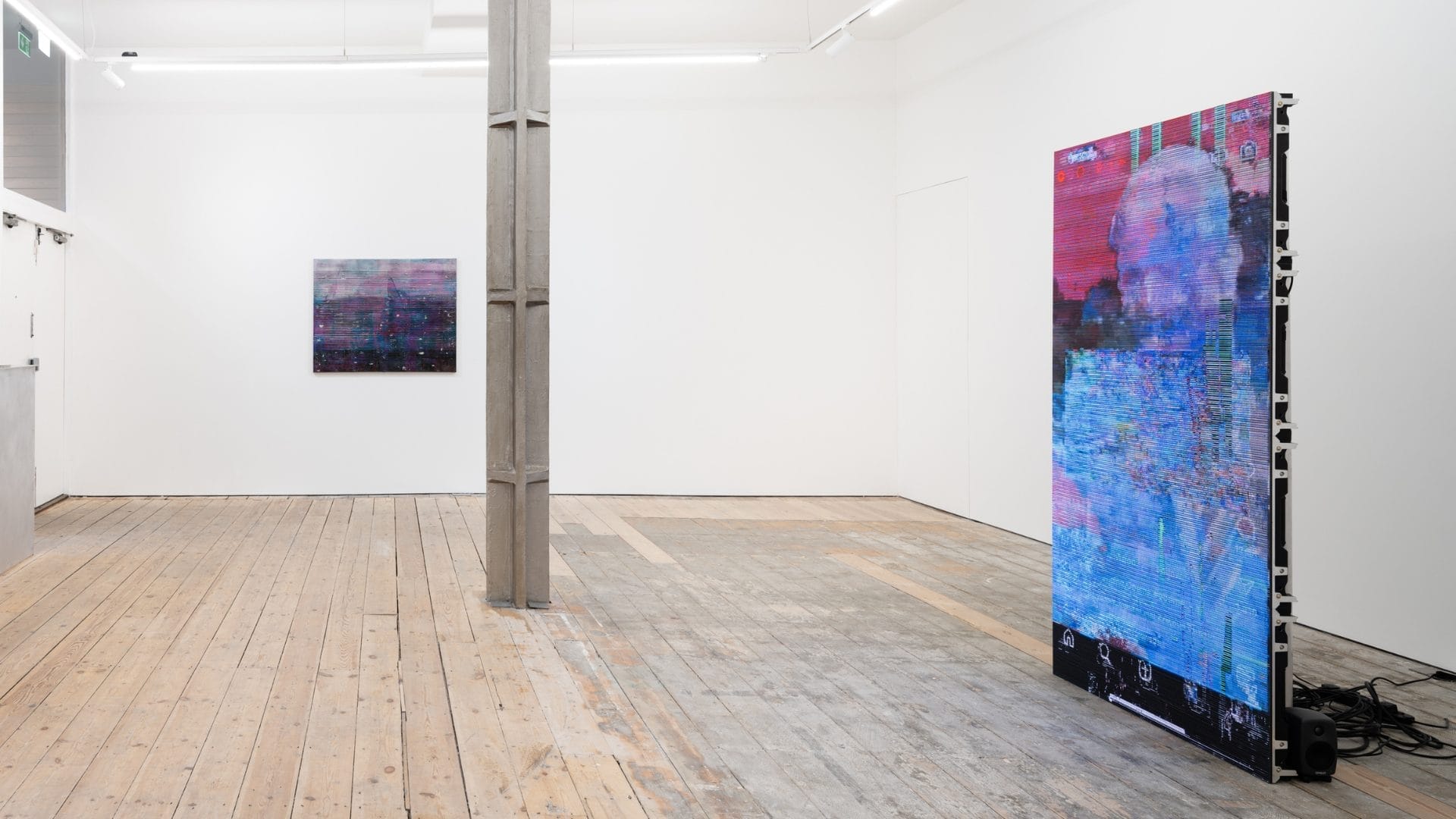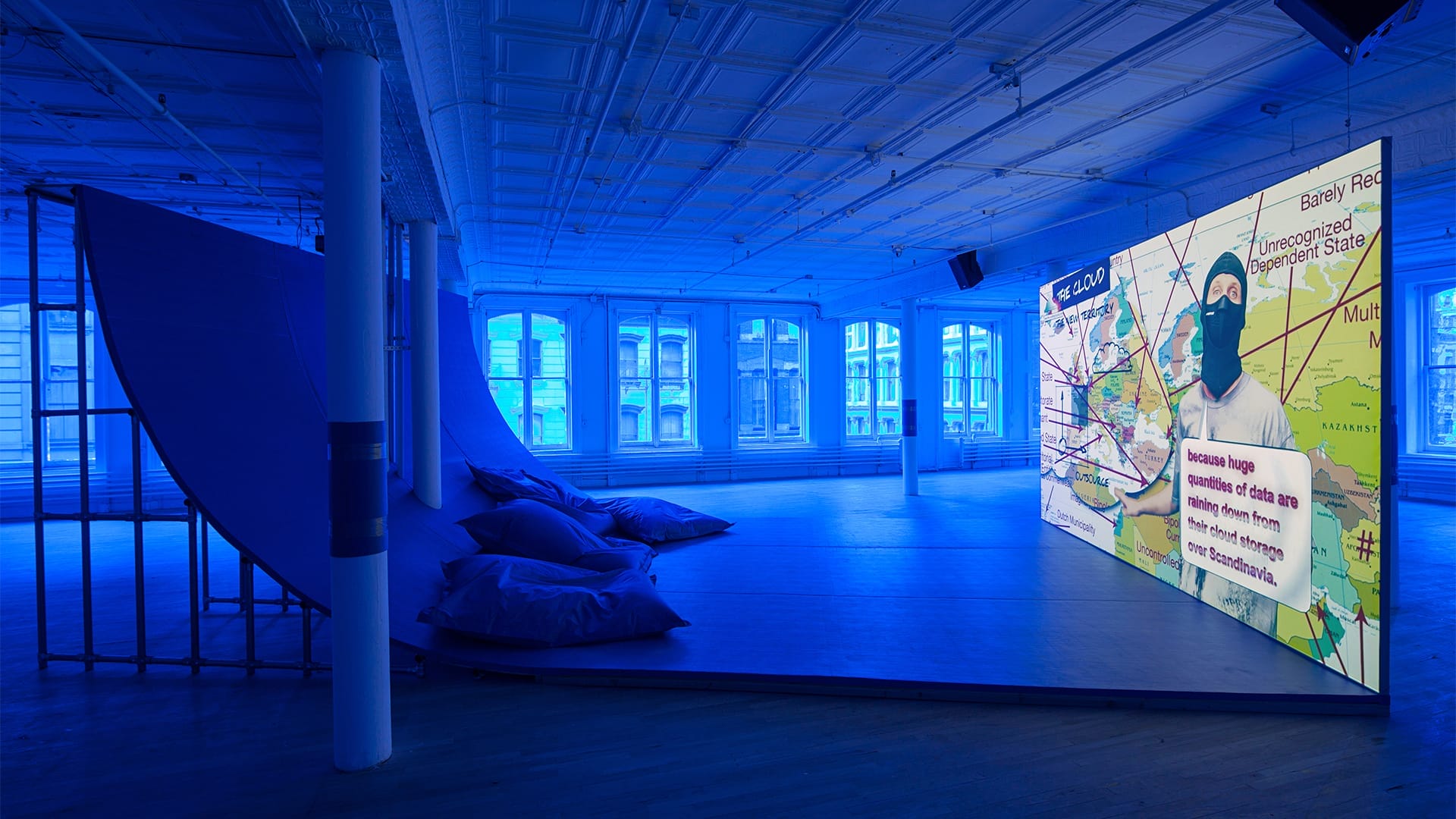
Hito Steyerl: Framing the Global Imagery
“Art is rather powerless…on the level of what it shows. It is more powerful on the level of how it shows.”
_Hito Steyerl
Hito Steyerl, born on January 1, 1966, she is a German-origin filmmaker, moving image artist, writer, and innovator in the essay documentary field. Steyerl’s main interests include media, technology, and the global circulation of images. She holds a PhD in philosophy from the Academy of Fine Arts Vienna and is currently a professor of New Media Art at the Berlin University of the Arts, where she co-founded the Research Center for Proxy Politics with Vera Tollmann and Boaz Levin.
Born in Munich to a Japanese biochemist mother and a German physicist father, Steyerl attended the Japanese Institute of Moving Images and later studied at the University of Television and Film Munich. She was profoundly influenced by Harun Farocki, though she has cited her former professor, renowned film historian Helmut Färber, as having a more direct influence on her work.
Steyerl’s work focuses on themes of militarization, surveillance, migration, the role of media in globalization, the spread of images, and the culture surrounding them. She has pushed both the role and label of “fine artist”, demonstrated through her tendencies and interests in deceiving the presentational context of art. Her work is developed from research, interviews, and the collection of found images, culminating in pedagogically oriented work in the realm of forensic documentaries and dreamlike montages.
In recent years, Steyerl’s work has expanded to confront the status of images in an increasingly digital world, with a particular focus on institutions (including museums), networks, and labor. She addressed the issue of corporate funding involving institutions, including “Drill” in 2019 at the Park Avenue Armory in New York, for which Steyerl revealed stories linking the building hosting the exhibition to the founding of the National Rifle Association.
In 2017, Steyerl was listed by ArtReview as the most influential person in the contemporary art world. Among her numerous awards are the 2010 NEW:VISION Award, presented by the Copenhagen International Documentary Festival for the film “In Free Fall”, the 2015 EYE prize, presented by the EYE Film Institute Netherlands and the Paddy & Joan Leigh Fermor Arts Fund, and the 2019 Käthe Kollwitz Award.

Education and Influences
Steyerl studied at the Japan Institute of the Moving Image and later at the University of Television and Film Munich. These formative experiences helped to develop her interdisciplinary approach to film and art, blending innovative narrative and visual techniques.
The figure of Harun Farocki had a significant impact on Steyerl, serving as a source of inspiration and model. Farocki is known for his work that explores the intersections between politics, society, and media. Farocki’s influence is evident in Steyerl’s critical approach to media and her ability to unveil the complexities of images in modern society.
Another key figure in Steyerl’s artistic evolution was her former professor, film historian Helmut Färber. His guidance helped Steyerl to refine her ability to analyze and interpret film language, a quality that is reflected in her work.
This academic foundation and the influences of key figures in the field of art and cinema have provided Steyerl with the tools to develop a unique voice in the contemporary artistic landscape. Her works show a deep understanding of media and an ability to explore complex themes such as globalization, militarization, and the impact of technology on society.
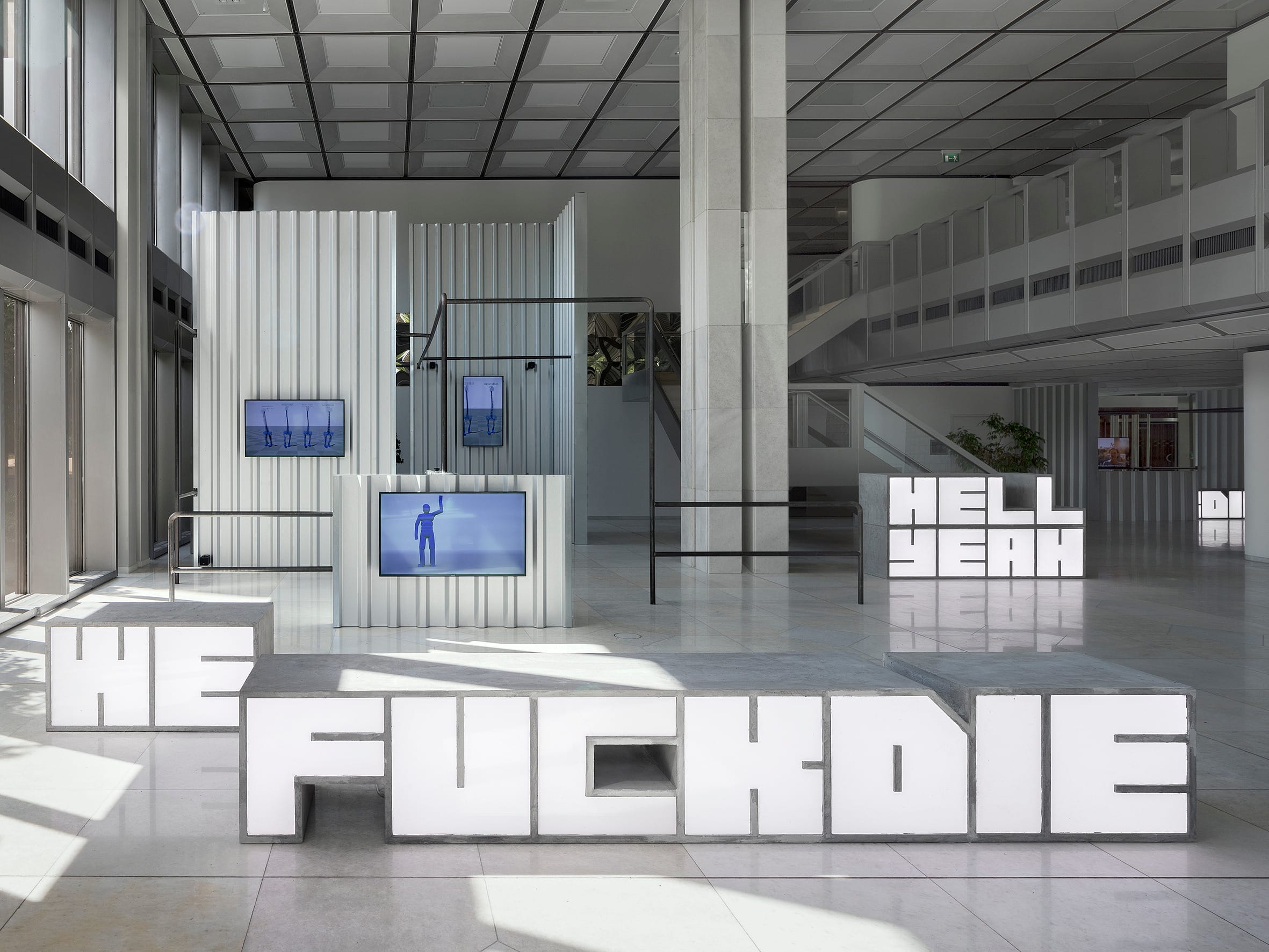
The Art of Steyerl – Between Technology and Social Criticism
In the third chapter, we delve into the essence of Hito Steyerl’s art, characterized by an intense fusion of technology and social critique. Steyerl’s works are deeply rooted in contemporary reality, exploring the interaction between media, technology, and the global circulation of images. Her art is not just an aesthetic expression, but also a powerful tool for social criticism.
Steyerl uses technology not only as a means of artistic creation but also as the subject of her works. Her video installations, for example, often incorporate advanced digital elements that question the role and impact of digital media in modern society. In this way, Steyerl creates a unique dialogue with viewers, inviting them to reflect on the pervasive nature of technology in their daily lives.
Beyond exploring themes related to technology, Steyerl also addresses social and political issues. From militarization to surveillance and migration, her work often reveals the power dynamics and disparities in global society. Through the use of both real and digitally altered images, Steyerl challenges the veracity and authenticity of the images we consume daily.
In her artistic pursuit, Steyerl demonstrates a unique mastery in combining aesthetics, narrative, and social commentary. Her works, often presented as essay documentaries or montages, bridge reality and representation, challenging viewers to question truth and manipulation in the age of information overload. This approach not only attests to her artistic skill but also underscores her commitment to using art as a means to stimulate critical awareness and public debate.
Steyerl’s ability to weave social critique with technology in visually stunning and intellectually provocative ways makes her work not just aesthetically impressive but also socially significant. This fusion of art and activism represents a distinctive feature of her contribution to the contemporary art landscape.

Key Works – A Journey Through the Creations of Hito Steyerl
In this chapter, we analyze some of the most significant works of Hito Steyerl, highlighting how each contributes to constructing a coherent narrative that reflects the core of her artistic inquiry.
“How Not to Be Seen: A Fucking Didactic Educational .MOV File” (2013). This work is a sharp reflection on visibility and surveillance in the digital age. With a satirical approach, Steyerl explores how the omnipresence of images influences our perception of reality. This investigation into the visible and the invisible creates a bridge to her later work, “In Free Fall.”
“In Free Fall” (2010): In this piece, Steyerl probes into economic and material decay, using the metaphor of a decommissioned airplane. This work extends the discourse on impermanence and the life cycle of objects, connecting to the theme of memory and representation in “Lovely Andrea.”
“Lovely Andrea” (2007): In this personal exploration, Steyerl delves into the theme of identity construction through images. This work not only explores her personal history but also how images influence our understanding of the past and present, a theme also found in “Duty-Free Art.”
“Duty-Free Art” (2015): Here, Steyerl reflects on art, economy, and the mobility of artworks in duty-free spaces. This series of works alludes to the fluidity and mutability of value in art, a concept that intertwines with ideas of control and surveillance explored in “Guardians of the Door.”
“Guardians of the Door” (2020): This installation focuses on surveillance and security, exploring how technology and power intertwine in contemporary society. The theme of surveillance links this work to “How Not to Be Seen,” closing the circle of discourse started by Steyerl.
In all these works, Steyerl does not merely create art for pure aesthetics; rather, she uses her creations as a means to explore and question themes of visibility, control, memory, and identity. This journey through her key works reveals a consistent and in-depth approach, where each work connects to the others, weaving a complex web of inquiries and reflections on our digital and globalized society.

Hito Steyerl’s Artistic Methodology
In this chapter, we explore Hito Steyerl’s artistic methodology, focusing on how her techniques and creative practices are fundamental to understanding her work. Steyerl is not limited to a single medium or approach; rather, her art is characterized by an eclectic fusion of techniques and formats ranging from video to installation, from photography to written text.
Interdisciplinarity and Experimentation: Steyerl adopts a radically interdisciplinary approach. Her works often mix cinema, documentary, visual art, and writing, creating a unique dialogue between different expressive languages. This experimentation is evident in works like “How Not to Be Seen,” where the didactic format of the documentary is subverted with satirical and surreal elements.
In her works, Steyerl uses a wide variety of materials, from archival footage to original shots, from digital images to texts. This combination of different media allows her to fully explore themes such as the manipulation of images and their influence on the perception of reality.
Steyerl’s works are often structured in a non-linear way, challenging traditional narrative conventions. She uses intertwining montages, overlapping texts, and fragmented narration to construct complex, multilayered stories, as shown in “Lovely Andrea.”
Steyerl’s methodology is not limited to pure artistic expression; it is also deeply rooted in political and social commitment. Her works address themes such as globalization, surveillance, and identity, actively inviting the viewer to critical reflection.
One of the key aspects of Steyerl’s methodology is the extensive research and documentation behind each of her works. She delves into complex subjects, conducting interviews, gathering material, and analyzing data, then transforming this information into artworks that are both informative and emotionally engaging.
Through this methodology, Steyerl not only creates visually impactful artistic works but also deep social and political commentaries that reflect and question the contemporary world. Her ability to merge research, narrative, and critical engagement makes her work unique in the contemporary art landscape.
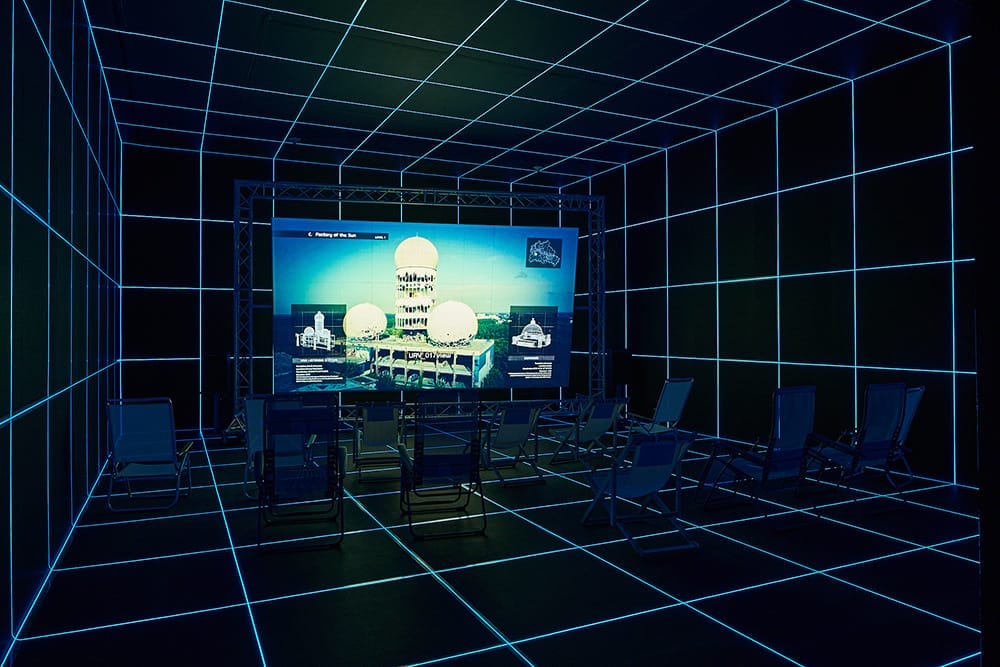
The Role of Digital and Media in Steyerl’s Work
Exploring Hito Steyerl’s work, we encounter an intricate dialogue with the digital and media, elements that not only serve as tools but also take on a leading role in her artistic work. Steyerl uses digital means to investigate and criticize the information society, highlighting how media shape our perception and understanding of the world.
In her approach, Steyerl does not merely use digital technology as a mere means of expression; rather, she transforms it into a field of critical exploration. For example, in works like “How Not to Be Seen,” the digital becomes a prism through which she examines surveillance and invisibility in the modern era. Simultaneously, Steyerl addresses the manipulation of images, exploring how they can be distorted, decontextualized, and laden with new meanings. This aspect is evident in works such as “In Free Fall,” where image manipulation serves to unveil complex and layered narratives.
Steyerl’s work goes beyond the simple presentation of images; it ventures into a critique of the information society, examining how public narratives are shaped by media. Through digital manipulation, augmented reality, and other technological techniques, she investigates how these influence narration and perception, challenging viewers to question what they see and believe.
Finally, Steyerl highlights the role of media and technology in networked society and globalization. Her work reflects on how the global spread of images and information influences politics, economy, and culture, offering a critical perspective on the interconnectedness of our modern world.
In this way, Steyerl’s work reveals itself as a profound inquiry into contemporary reality, where digital and media are not only means but also subjects of an ongoing artistic dialogue, challenging conventions and inviting critical reflection on the nature of modern society.
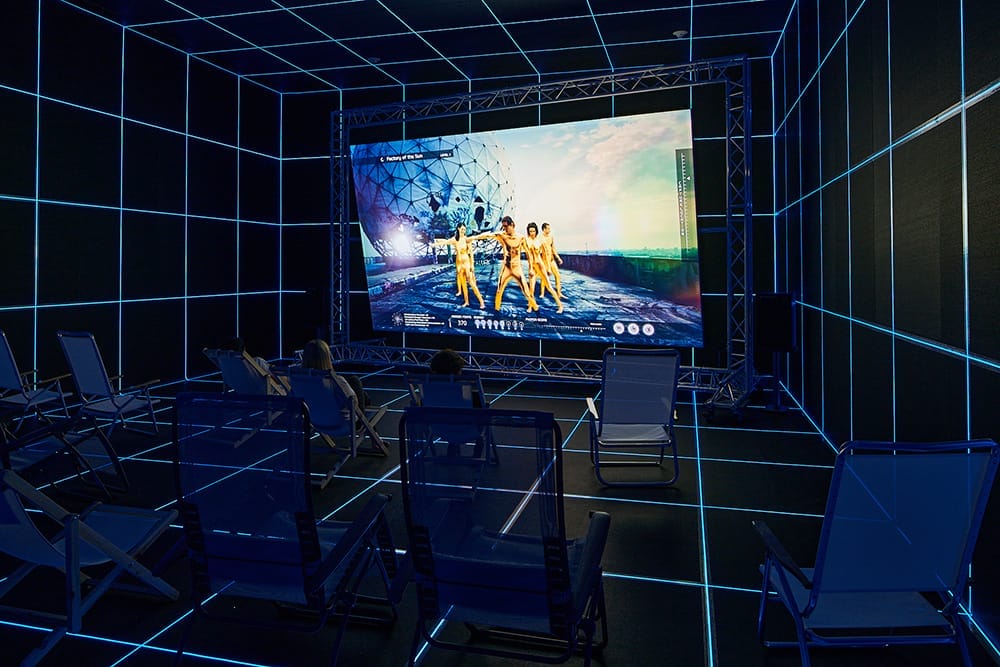
Encounters with Politics – The Political Imprint in Steyerl’s Art
Hito Steyerl has always embarked on an artistic journey closely intertwined with political and social themes, making politics an intrinsic component of her work. This chapter explores how Steyerl addresses and incorporates political issues into her works, using art as a means to express and critique power dynamics and social injustices.
Steyerl’s work stands out for its ability to capture and represent the political complexities of our time. Through the use of images, videos, and installations, Steyerl explores themes such as militarization, surveillance, globalization, and the impact of technology on society. A notable example is “How Not to Be Seen,” where the concept of invisibility is used to question surveillance and control in the digital era, inherently political themes.
Moreover, Steyerl does not just represent political issues; she also seeks to stimulate active dialogue between her work and the viewers. Her works are often interactive, inviting the audience to actively participate, not just as observers but as critical participants. This is evident in installations like “Guardians of the Door,” which raise questions about security, surveillance, and individual rights.
Steyerl also addresses the politics of art itself, examining how artistic institutions and their funding are intertwined with broader issues of power and politics. This is particularly evident in works like “Duty-Free Art,” where she explores how the art space can reflect and perpetuate global power dynamics.
Ultimately, Steyerl’s work reveals itself as a powerful means to explore and critique power structures, offering a unique perspective on political and social issues. Through her art, Steyerl not only documents political reality but also invites critical reflection, stimulating a broader debate about society and its functioning.
Concluding our journey through the artistic universe of Hito Steyerl, we are presented with a landscape where art is not just expression, but also interrogation and challenge. Steyerl, with her mastery and critical acumen, invites us into a world where images are not mere representations, but tools of investigation and revelation.
Steyerl’s art does not just document reality; it deconstructs and reconstructs it, offering us a prism through which to observe the complexities and contradictions of our time. Each work becomes a dialogue, a negotiation between the artist and the viewer, between reality and its representation. In this dialogue, Steyerl does not just ask questions; she also offers a space for reflection, an invitation to look beyond appearances, to question the truths taken for granted.
Her art is a bridge between the personal and the political, the local and the global, showing how these worlds are inextricably linked. Through her work, Steyerl teaches us that art is not just a means to express reality, but also a way to transform it. With her ability to fuse critique, aesthetics, and technology, she guides us in a continuous and ever-renewed exploration of the possibilities of art in telling and shaping our world.
In Steyerl, we find not just an artist, but also an archaeologist of the present, one who digs into the layers of digital and social reality to unearth hidden truths and forgotten stories. Her work leaves us with a sense of discovery and challenge: an invitation to see the world not just for what it appears to be, but for what it could be.
Night Time Story
NIGHTTIMESTORY is a decentralized and online project that aims to be a platform for show a wide range of contemporary art forms, including visual art, videoart, conceptual art theory, NFTs, and critique.
You may also like

In conversation with Manuel Fois
During this episode of Fakewhale Live, host Jesse Draxler has a chat with Italian visual artist Manu
Fakewhale in Dialogue with Chris Dorland
We’ve been following Chris Dorland’s work for some time now, captivated by his ability to fuse d
Sander Wassink, between pixel and particle, at CONTRAST, Tokyo
“Between pixel and particle” by Sander Wassink, curated by CONTRAST, at CONTRAST, Tokyo,

